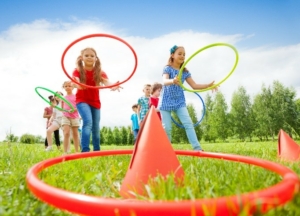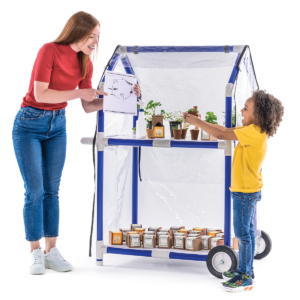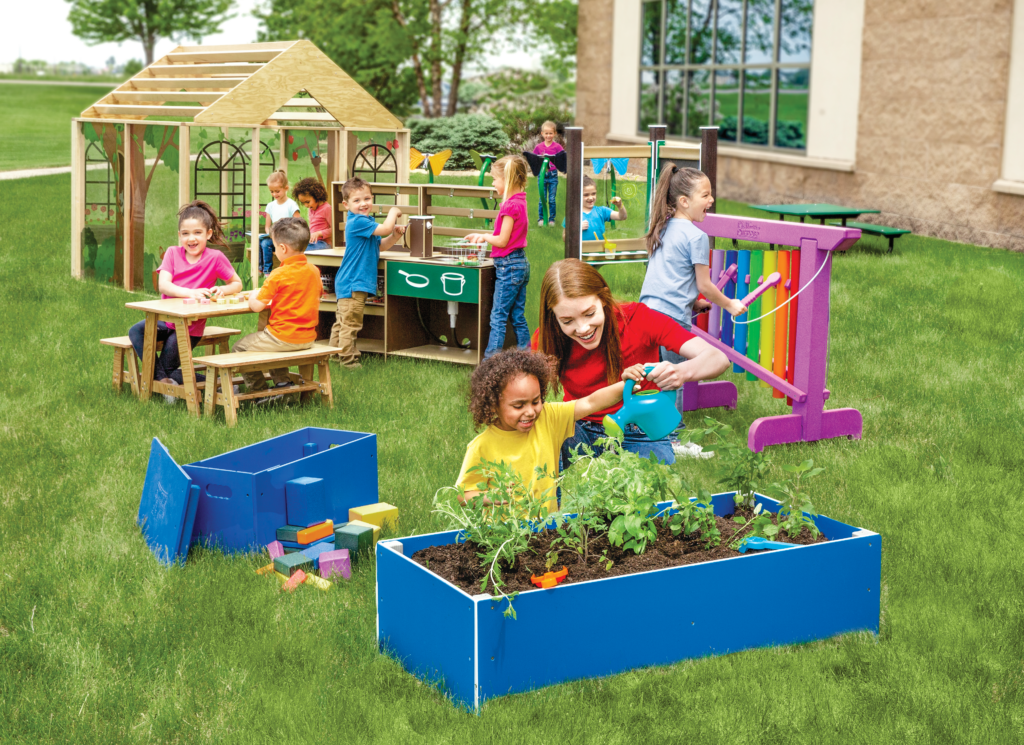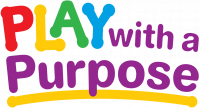Children are natural learners and are at their highest level of development when they are at play. Outdoor play is especially beneficial to the support of learning and skill development. It invites children to move which is healthy for both body and brain. It builds environmental awareness and taps into the physical, multi-sensory ways children naturally learn. Most importantly, the outdoor “experience” can’t happen when you are inside. So, how can your indoor learning environment be extended beyond the four walls of your classroom or home? Bringing “inside learning” outside and bringing “outside learning” inside is a great way to create authentic experiences that integrate learning, play and the great outdoors! Here are a few ideas to get you started.
Connections… From Inside To Outside
Let’s Paint – Easel painting is an important pre-requisite to the fine motor skill needed for conventional writing. Set up a paint easel outside. Positioning the easel where children can observe nature may very inspiring. If an easel’s not handy, gather a bucket, some water, some paintbrushes. Paint letters or words on the sidewalk or if you have a brick building, that works even better.
Books and Story Time – Books are a wonderful springboard for outdoor experiences. Grab a blanket, a basket of books or use a decorated backpack to transport story time outdoors. If you’re learning and reading about worms, move the science center outdoors. It’s a great place to create a worm habitat.
Anytime, Everywhere Dramatic Play – Use play equipment as a stage for acting out favorite stories or creating new versions of stories. Hello Toes, Hello Feet by Ann Whitford is a great action story with hopping, clomping, leaping, skipping, jumping, shuffling and much more. This is a great book for vocabulary development and a springboard for creating our own class book using lots of action words.

A Playground Orchestra – Use a sing along book to spark the creation of rhythms to go with the story. Use drums or rhythm sticks to make tones and rhythms on play equipment, rocks, or trees. Turn the fence into an instrument by hanging foil pans, cookie sheet or spoons on it.
Let The Games Begin! – Use hula hoops, balls, bean bags, traffic cones, ropes, frisbees or loose parts to create learning games. Use plastic lids from butter tubs, etc. for a Frisbee Toss game with letters, sight words, rhyming words, compound words, etc. Affix Velcro dots to each lid so you can change the game to fit the skill you are working on.
Connections… From Outside To Inside
Planting Time – Plant an herb garden or a container garden. As the herbs are growing, plan opportunities for the children to observe and document the growth process through journaling or plant diaries. Container gardening is easy, saves space and can be taken home when the school year is over. Children can use empty bleach or milk jugs, buckets, baskets, crates, a window box…just use your imagination! Create a “storyboard” or a class book that documents your gardening project.
space and can be taken home when the school year is over. Children can use empty bleach or milk jugs, buckets, baskets, crates, a window box…just use your imagination! Create a “storyboard” or a class book that documents your gardening project.
Nature Detectives – Take nature walks and look for things in nature that are shaped like numbers, letters or shapes. Collect a variety of color swatches from the paint store. Have children detect things in nature that match their color swatches. Careful not to disturb nature’s growth, but if samples can be taken, children can set up a “Colors In Nature” display, and learn new color vocabulary words i.e. aquamarine or sienna. Take pictures for children to create a class book.
Signs and Symbols – Symbols are an important form of print. Learning to read signs and symbols helps a child’s overall symbolic development. Take a literacy walk someplace you are likely to see signs with only symbols representing information, such as a stick figure walking to indicate that it is safe to cross the street and a red hand indicating that it is not. I Read Symbols by Tana Hoban or Signs In My Neighborhood by Shelly Lyon are great to follow up this activity.
There are several books for children about signs that support literacy walks. In City Signs by Zoran Milich, the only words are colorful photographs of street signs. Signs by Susan Canizares and Pamela Chanko includes not only photographs of signs, but also text about things signs can tell us. As children become more aware of signs in their environment, they can create signs for outdoors such as signs to mark plants in container gardens or a sign-up sheet for turns on the tire swing.
Activities for Fall – As leaves begin to fall, take children to a spot where they can look at leaves that are turning or collect some fallen leaves. If trees are sparse near your play space, supplement this activity with leaves collected from 4 or 6 trees common in your area. Collect 2 per child, preferably with distinct shapes. Press and laminate the leaves for multiple uses year-around. Hold up a leaf asking children to compare their leaves with yours. What shape is the leaf? Oval, triangle, star-shaped, etc. To the tune of Mary Wore Her Red Dress, sing the following song, inserting various shape names and different ways for the children to move: “If you have a star leaf, star leaf, star leaf, If you have a star leaf, stand up now”.
Now it’s your turn to knock down the walls between learning and outdoor play! Bring inside out and outside in to create authentic experiences that will hook your young learners with no boundaries.








Leave A Comment